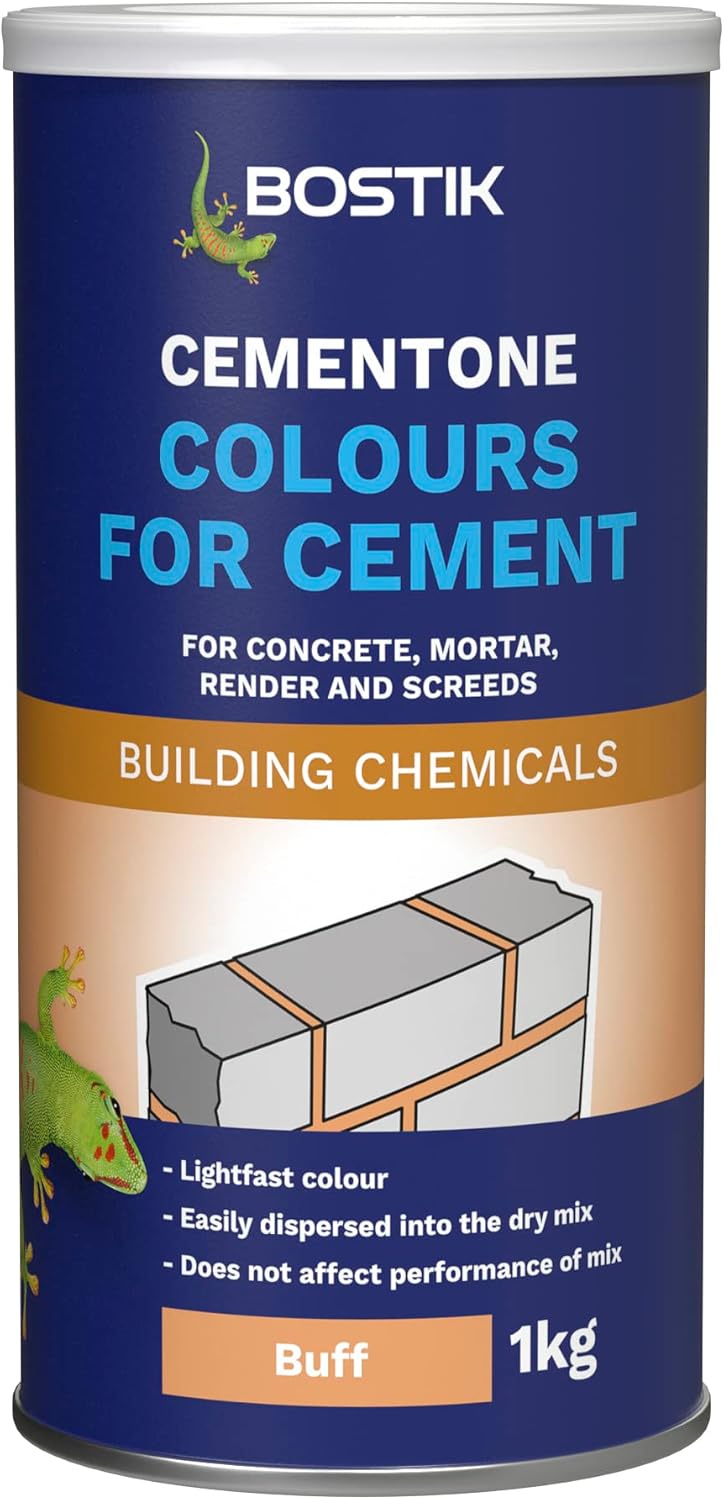
Bostik Colours for Cement, For Concrete, Mortar, Render and Screeds, Available in 5 Intermixable Colours, For Interior and Exterior Use, Colour: Buff, Size: 1kg
FREE Shipping
Bostik Colours for Cement, For Concrete, Mortar, Render and Screeds, Available in 5 Intermixable Colours, For Interior and Exterior Use, Colour: Buff, Size: 1kg
- Brand: Unbranded

Description
From concrete plastisicers and mortar water proofers to cement accelerators, retarders, dyes and everything in between, we’ve got it at Selco.
If you have gotten to this point, done a vast array of test mixes, tried every dye, tone and tint you can find and still cannot get a match there is yet still more hope!
What concrete additives and mortar additives do we have available?
Under no circumstances should you ever change the cement to sand ratio of a mortar mix for a new mix so that it’s different from any existing mortar just to ensure a colour match! This may affect structural integrity In this project guide we go through what’s involved with matching mortar colours, read on to find out how. Why Match Mortar Colours? Now that you know exactly how to create some test mixes and compare to your existing mortar to find a colour match, it’s now just a question of getting it done, but before you make a start there are a few further points to be aware of: It’s no coincidence that both the colour of most standard mortars and cement is a grey’ish colour. This is due to the fact that the grey colour-tones of the cement go a fair way into the overall colour of the mortar.
If it helps, I am looking for the sandy colour that this chap was able to get in his "this is how it turned out" picture (but funnily enough he wanted more grey!): Accelerators help to speed up the setting and hardening process of cement and mortar, whilst retarders slow it down. If you’re looking for a concrete waterproofer additive, many of our accelerators, retarders and plasticisers include waterproofing and frost-proofing qualities as an added benefit. As you may imagine, this is quite a costly process but if you are set on getting the best, most naturally blended finish possible, it may be something you’re willing to dig a bit deeper for.You can now take this container to your local DIY sheds, builders merchants or other locations that sell sand so that you can compare it and hopefully get a close if not exact match. Even a small trace of dye can have quite a dramatic effect on the overall colour so you will need to experiment using quite small quantities at a time. If you are working with lime then you will also need to do the same, but with lime you will only be working with ratios between 3:1 (3 sand to 1 lime) and 5:1 (5 sand to 1 lime).
As we have established, the colour and tone of the sand that is used in your mortar mix has pretty much the greatest bearing on the overall colour of new mortar. If you cannot locate the sand then talk to the builders merchants and even the local quarry to find out how many local building sands there are available. Firstly, start with a 3:1 mix (3 sand to 1 cement) and then a 3½:1 (3½ sand to 1 cement), then a 4:1 mix (4 sand to 1 cement), then a 4½:1 mix (4½ sand to 1 cement) and so on, all the way up to a 6:1 mix.
As with finding an existing mix ratio, quite a bit of experimentation is needed to get a good match. The next part is a waiting game! You will need to leave the solution for 2-3 days for the Muratic Acid to get to work on the on the cement and dissolve it (and also any lime that may also be present). Final specifications?If further advice is required, one of our Mortar Specialists can visit with our Mortar Colour Selector to assist in finding an appropriate match. Call our Mortar Helpline on 0800 667 827 for more details.
As we have mentioned above, the real key to matching mortar colour is to work out exactly what type of sand was originally used. However, if the mortar is very light in colour then this suggests that either a white cement (aka Snowcrete) or lime has been used. With your sample to hand place them on an old scrap piece of wood. Using a similar scrap piece of wood, place this on top and use it to grind the mortar down. As we have mentioned, as the sand used in a mix makes up the bulk of the actual mix itself, it has the greatest effect on the overall colour, so to get a good match, it’s really essential to identify it. Once dried, simply hold your sample board up to the existing mortar and look along the line until you spot a close or identical colour match and this will indicate the mix ratio to go for.
Now, pour your sand solution gently over the top. The tights will act as a sieve, allowing the remaining water/acid solution to drain off, leaving you with just your sand. The last job now is to dispose of your acid solution. As this is classed as hazardous waste DO NOT simply pour it down the drain! It needs to be disposed of safely and correctly. The slight differences in mortar colour may not be such a major concern on newer properties as often the mortar colour can be matched fairly closely, but as said in older properties that may be several hundred years old, matching mortar colour can be a nightmare.
- Fruugo ID: 258392218-563234582
- EAN: 764486781913
-
Sold by: Fruugo
